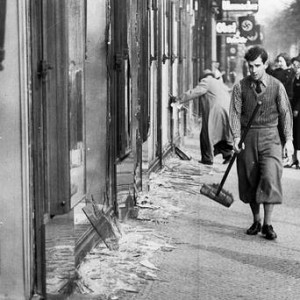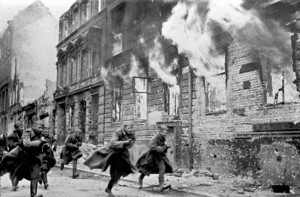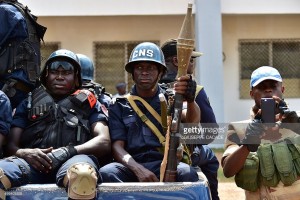A lifetime has passed since Kristallnacht. Seventy seven years is long enough to empty popular memory of the scale and nature of events in Germany on November 9, 1938. To a generation that has forgotten—or one that never learned—the Night of Broken Glass seems not so different than Ferguson, Missouri, or any other urban riot within living memory. Even the name that has come down to us suggests broken shop windows, nothing more lethal than glass on the sidewalk.
But there was more. Mahatma Gandhi, writing within two weeks of the pogroms that swept across Germany on that night, was not naïve about the course they took. The infamous letter of November 20, 1938, testifies to his knowledge of the progression of the onslaught. Still, he advocated nonviolent resistance by the Jews even while admitting it could well be futile for them.
Foremost in Gandhi’s concern was not the fate of Jewry. His paramount commitment was to his own concept of the transformative power of non-violence. Sacrifice of Jewish lives on the high altar of satyagraha would—somehow—metamorphose Germany. The Germans themselves would rise transfigured from the blood and ashes of quiescent Jews.
A brief outline of Kristallnacht might be useful. The U.S. Holocaust Museum gives the details:
On the night of November 9, 1938, violence against Jews broke out across the Reich. It appeared to be unplanned, set off by Germans’ anger over the assassination of a German official in Paris at the hands of a Jewish teenager. In fact, German propaganda minister Joseph Goebbels and other Nazis carefully organized the pogroms. In two days, over 250 synagogues were burned, over 7,000 Jewish businesses were trashed and looted, dozens of Jewish people were killed, and Jewish cemeteries, hospitals, schools, and homes were looted while police and fire brigades stood by. . . .
The morning after the pogroms 30,000 German Jewish men were arrested for the “crime” of being Jewish and sent to concentration camps, where hundreds of them perished. . . . Businesses owned by Jews were not allowed to reopen unless they were managed by non-Jews. Curfews were placed on Jews, limiting the hours of the day they could leave their homes.
After the “Night of Broken Glass,” life was even more difficult for German and Austrian Jewish children and teenagers. Already barred from entering museums, public playgrounds, and swimming pools, now they were expelled from the public schools. Jewish youngsters, like their parents, were totally segregated in Germany.
In the wake of the massive pogroms, on November 12, the Reich imposed a collective fine on German Jews of one billion Reichsmarks ($400,000, 000) to repair the damage. Jews themselves were under order to clean up and rehabilitate streets and store fronts destroyed in the violence. At the same time, they were barred from collecting insurance for the destruction of their own properties:
Instead, the state confiscated payments owed by insurers to Jewish property holders. In the aftermath of the pogrom, Jews were systematically excluded from all areas of public life in Germany.
And who was the distraught teenager whose act provided a pretext for the massive pogrom? What impelled him to shoot a diplomat with the German embassy in Paris?
For the answer, go back to October 28, less than two weeks before Kristallnacht. On October 28, Germany had deported 17,000 Polish Jews, forcing them over the border into Poland. Polish authorities refused entry to the deportees, leaving them stranded. They were trapped, homeless, in a hinterland between Germany and Poland. Among them were the parents of Herschel Grynszpan, the 17-year-old Polish Jew who had sought sanctuary in Paris.
Again, seventy years is a long time. By now, the romance of nonviolence has become a middle brow bromide. It is the default position of the Better Sort who rely on the protection of others. What comes to straight to mind is the November 29 report in The Guardian of Pope Francis’ visit to Bangui, Central African Republic:
Francis was accompanied by Vatican security personnel in flak jackets and armed UN peacekeepers. UN tanks patrolled the streets.
Might there be some irony here? Our pope, who declares arms manufacturers unChristian, anoints himself “a pilgrim of peace and an apostle of hope” surrounded by armed men pledged to take a bullet for him.






